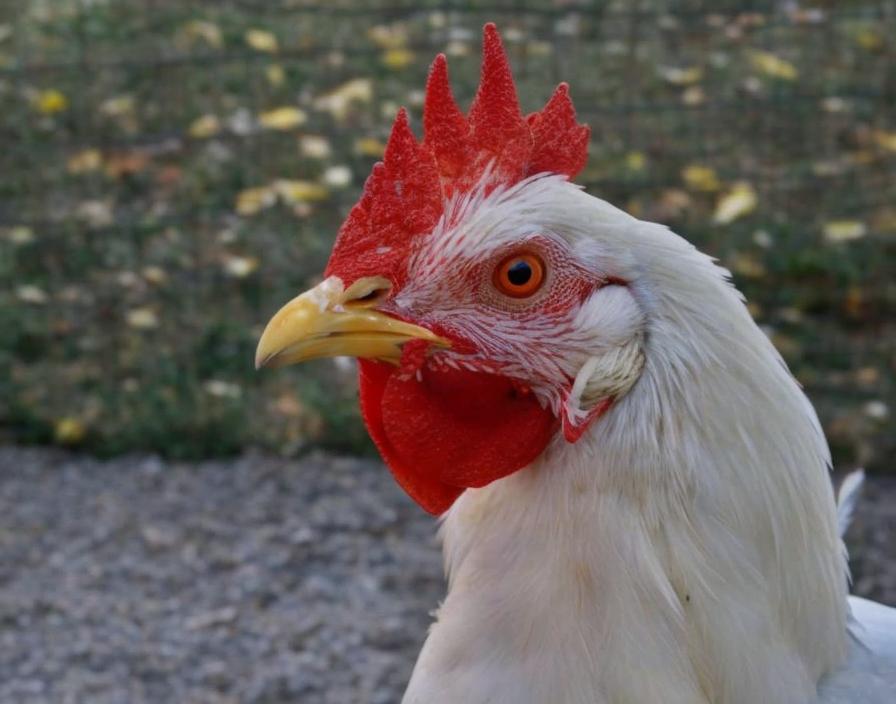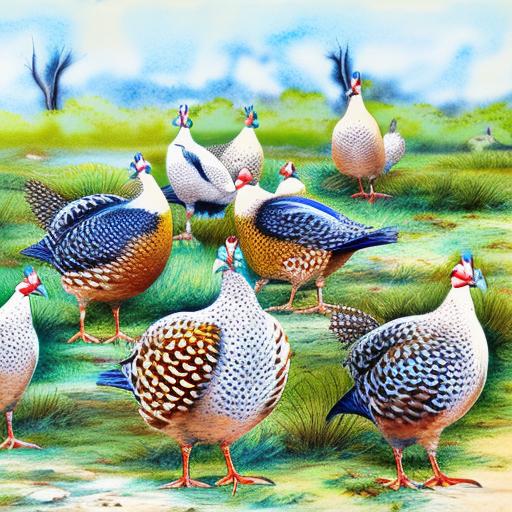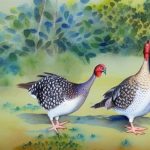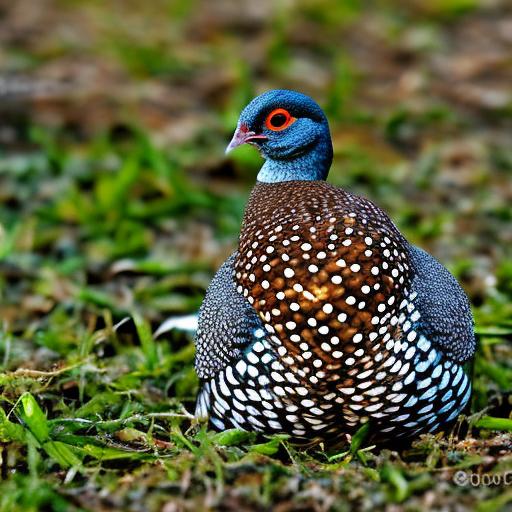Guinea fowl breeding pens are essential for anyone looking to raise these unique and fascinating birds. Whether you are a small-scale hobbyist or a commercial breeder, having a dedicated space for your guinea fowl to breed and raise their young is crucial for their health and well-being. Breeding pens provide a safe and controlled environment for guinea fowl to lay eggs, incubate them, and raise their chicks without the risk of predators or other threats. In this article, we will explore the key aspects of setting up a guinea fowl breeding pen, including selecting the right location, designing and constructing the pen, choosing the necessary equipment and supplies, maintaining and cleaning the pen, ensuring the health and safety of your guinea fowl, and tips for successful breeding and raising of guinea fowl.
Key Takeaways
- Guinea fowl breeding pens are essential for successful breeding and raising of guinea fowl.
- Select a location for your guinea fowl breeding pen that is spacious, well-drained, and protected from predators.
- When designing and constructing your guinea fowl breeding pen, consider factors such as size, ventilation, and predator-proofing.
- Choose the right equipment and supplies for your guinea fowl breeding pen, including feeders, waterers, and nesting boxes.
- Regular maintenance and cleaning of your guinea fowl breeding pen is crucial for the health and well-being of your guinea fowl.
Selecting the Right Location for Your Guinea Fowl Breeding Pen
When it comes to selecting the right location for your guinea fowl breeding pen, there are several factors to consider. First and foremost, you’ll want to choose a location that is safe and secure for your birds. This means selecting an area that is protected from predators such as foxes, raccoons, and birds of prey. Additionally, you’ll want to ensure that the location provides adequate shelter from the elements, including wind, rain, and extreme temperatures. Ideally, the location should also have access to natural sunlight and fresh air to promote the health and well-being of your guinea fowl. Finally, consider the proximity to your home or other buildings on your property, as you’ll want easy access to the breeding pen for daily maintenance and monitoring. Taking these factors into account will help you select the best location for your guinea fowl breeding pen.
Once you have identified a suitable location for your guinea fowl breeding pen, it’s time to consider the design and construction of the pen itself. The size of the pen will depend on the number of guinea fowl you plan to breed, but as a general rule of thumb, each bird should have at least 3-4 square feet of space. The pen should be constructed with sturdy fencing to keep predators out and your guinea fowl in. Additionally, consider adding a roof or covering to protect your birds from aerial predators and harsh weather conditions. Providing adequate shelter within the pen is also important, whether it’s a simple shelter or nesting boxes for your guinea fowl to lay their eggs. By carefully considering these design and construction elements, you can create a safe and comfortable environment for your guinea fowl to breed and raise their young.
Choosing the Right Equipment and Supplies for Your Guinea Fowl Breeding Pen
Equipping your guinea fowl breeding pen with the right supplies and equipment is essential for the health and well-being of your birds. First and foremost, you’ll need to provide adequate food and water for your guinea fowl. This may include feeders and waterers that are suitable for their size and number. Additionally, consider providing supplemental sources of calcium and grit to support egg production and digestion. Nesting boxes or areas should also be provided for your guinea fowl to lay their eggs in a safe and comfortable environment. Depending on your climate, you may also need to provide heating or cooling elements within the pen to ensure that your birds are comfortable year-round. Finally, consider adding perches or roosts for your guinea fowl to rest on, as well as providing enrichment items such as dust baths or toys to keep them mentally stimulated.
Maintaining and Cleaning Your Guinea Fowl Breeding Pen
Maintaining a clean and hygienic environment within your guinea fowl breeding pen is crucial for the health and well-being of your birds. Regular cleaning of the pen, including removing droppings, soiled bedding, and old food, is essential to prevent the buildup of bacteria and parasites. Depending on the size of your pen and the number of birds, you may need to clean the pen daily or weekly to ensure that it remains clean and sanitary. Additionally, regularly inspecting the pen for any signs of damage or wear and tear will help prevent escapes or injuries to your guinea fowl. Providing fresh bedding material, such as straw or wood shavings, will also help keep the pen clean and comfortable for your birds. By maintaining a clean and well-kept breeding pen, you can help prevent disease and ensure that your guinea fowl remain healthy and happy.
Ensuring the Health and Safety of Your Guinea Fowl in the Breeding Pen
Ensuring the health and safety of your guinea fowl in the breeding pen is essential for successful breeding and raising of these birds. Regular health checks should be conducted to monitor the overall condition of your birds, including their weight, feather quality, and behavior. Any signs of illness or injury should be addressed promptly to prevent the spread of disease within the pen. Additionally, providing a balanced diet that meets the nutritional needs of your guinea fowl is crucial for their overall health and reproductive success. This may include a commercial game bird feed supplemented with fresh fruits, vegetables, and protein sources. Providing access to clean water at all times is also essential for hydration and overall health. Finally, consider implementing biosecurity measures within your breeding pen to prevent the introduction of diseases from outside sources. This may include quarantining new birds before introducing them to the existing flock and limiting access to visitors or other animals that may carry diseases.
Tips for Successful Breeding and Raising Guinea Fowl in Your Breeding Pen

Successfully breeding and raising guinea fowl in your breeding pen requires careful attention to their natural behaviors and needs. Providing a balanced diet that meets their nutritional needs is crucial for successful egg production and healthy chicks. Additionally, providing a safe and comfortable environment within the breeding pen will help reduce stress and promote successful breeding behaviors. Monitoring the behavior of your guinea fowl closely will also help you identify when they are ready to breed or when they may be experiencing any health issues. Finally, providing adequate space for your guinea fowl within the breeding pen will help reduce aggression and competition among birds, leading to more successful breeding outcomes.
In conclusion, setting up a guinea fowl breeding pen requires careful consideration of several key factors, including selecting the right location, designing and constructing the pen, choosing the necessary equipment and supplies, maintaining a clean environment, ensuring the health and safety of your birds, and implementing tips for successful breeding and raising. By taking these factors into account and providing a safe and comfortable environment for your guinea fowl, you can enjoy successful breeding outcomes and raise healthy birds for years to come.
If you’re interested in guinea fowl breeding pens, you may also want to explore the topic of turkey coop requirements. Understanding the specific needs of turkeys in terms of housing and space can provide valuable insights for creating optimal conditions for guinea fowl as well. Check out this informative article on poultrywizard.com to learn more about the importance of providing suitable coops for turkeys and how it relates to guinea fowl breeding pens.
FAQs
What are guinea fowl breeding pens?
Guinea fowl breeding pens are enclosures or structures specifically designed for the purpose of breeding and raising guinea fowl.
What are the benefits of using guinea fowl breeding pens?
Guinea fowl breeding pens provide a controlled environment for breeding, protecting the birds from predators, and allowing for easier management of breeding activities.
What should be considered when designing guinea fowl breeding pens?
When designing guinea fowl breeding pens, factors such as space requirements, ventilation, predator protection, and ease of access for feeding and cleaning should be taken into consideration.
What materials are commonly used for building guinea fowl breeding pens?
Common materials used for building guinea fowl breeding pens include wood, wire mesh, and metal roofing. These materials provide durability and protection for the birds.
How can guinea fowl breeding pens be maintained?
Guinea fowl breeding pens should be regularly cleaned and sanitized to prevent the spread of diseases. Additionally, regular inspections for wear and tear should be conducted to ensure the structural integrity of the pens.
Are there specific regulations or guidelines for building guinea fowl breeding pens?
Regulations and guidelines for building guinea fowl breeding pens may vary by location. It is important to check with local authorities or agricultural agencies for any specific requirements or recommendations.
Meet Walter, the feathered-friend fanatic of Florida! Nestled in the sunshine state, Walter struts through life with his feathered companions, clucking his way to happiness. With a coop that’s fancier than a five-star hotel, he’s the Don Juan of the chicken world. When he’s not teaching his hens to do the cha-cha, you’ll find him in a heated debate with his prized rooster, Sir Clucks-a-Lot. Walter’s poultry passion is no yolk; he’s the sunny-side-up guy you never knew you needed in your flock of friends!







